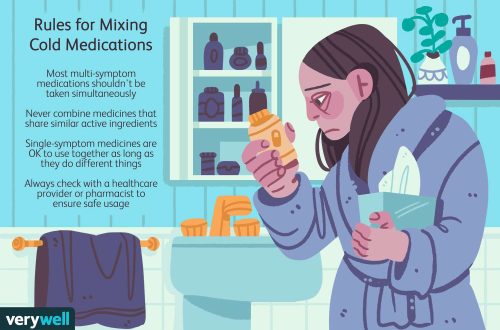When is the Best Time to Cold Plunge? Optimal Tips
The best time to cold plunge is in the morning or after a workout. Cold plunging can invigorate and rejuvenate the body, making it an ideal way to start the day or aid in muscle recovery post-exercise.
This practice of immersing oneself in cold water has gained popularity due to its numerous health benefits, including improved circulation, reduced muscle inflammation, and enhanced mental clarity. By incorporating cold plunging into your routine at the optimal times, you can maximize its effectiveness and experience a refreshing boost to your overall well-being.
The Cold Plunge Phenomenon
Have you ever jumped into a cold pool or taken a cold shower and felt invigorated afterwards? That feeling is what has sparked the rising popularity of cold water immersion, also known as cold plunging. Cold plunging involves immersing your body in cold water, typically between 50-60°F, for a short period of time, usually no more than 10 minutes. While it may seem like a daunting task, the potential health benefits are worth considering.
Rising Popularity Of Cold Water Immersion
Cold plunging has been around for centuries, but it has gained popularity recently, particularly among athletes and celebrities. Many people swear by the practice, claiming it helps them recover faster from workouts, improves their mood, and boosts their immune system. Some even claim that it helps them sleep better at night.
While the benefits of cold plunging are largely anecdotal, there is some scientific evidence to support the practice. A 2018 study found that taking a cold shower can help reduce inflammation in the body, which is linked to a variety of health issues, including heart disease and cancer.
Potential Health Benefits
In addition to reducing inflammation, cold plunging may have other potential health benefits. Some studies have suggested that it can:
- Improve circulation
- Boost the immune system
- Reduce muscle soreness and fatigue
- Improve mental health by reducing stress and improving mood
It’s important to note that while cold plunging may offer some health benefits, it’s not for everyone. People with certain health conditions, such as Raynaud’s disease or asthma, should avoid cold water immersion. It’s also important to start slowly and gradually build up your tolerance to cold water, as plunging into water that is too cold can be dangerous.
In conclusion, while the idea of immersing yourself in cold water may seem intimidating, the potential health benefits are hard to ignore. If you’re looking for a new way to boost your health and wellness routine, consider giving cold plunging a try.
Understanding Your Body’s Response
For an invigorating cold plunge, the best time is in the morning or after a workout. This helps to jumpstart circulation and aid muscle recovery. Understanding your body’s response to cold immersion can enhance the overall experience and benefits.
The Science Of Cold Exposure
Your body’s response to cold plunging is influenced by the science of cold exposure.
Acclimation To Temperature Extremes
Understanding your body’s response helps in acclimating to temperature extremes effectively.
When exposed to cold, the body initiates a series of physiological responses to maintain its core temperature.
Cold plunging triggers vasoconstriction, where blood vessels constrict to reduce heat loss.
Your heart rate and metabolic rate may increase to generate heat and keep your body warm during cold exposure.
Over time, regular cold plunging can help the body adapt to colder temperatures more efficiently.
This process, known as cold acclimation, improves your body’s ability to withstand and recover from cold stress.
Cold exposure also stimulates the production of brown adipose tissue, which generates heat to keep you warm.
By understanding your body’s response to cold plunging, you can optimize the timing for maximum benefits.
Morning Invigoration
Morning invigoration through cold plunging can be a powerful way to kickstart your day with a surge of energy and mental clarity. As the sun rises, taking a plunge in cold water can help awaken your senses, enhance mental alertness, and give your metabolism a much-needed boost.
Kickstarting Metabolism
Cold plunging in the morning can activate your body’s natural metabolic processes, triggering a surge in energy expenditure. The shock of the cold water causes blood vessels to constrict, which in turn stimulates the circulatory system and increases oxygen flow, revving up your metabolism for the day ahead.
Enhancing Mental Alertness
The invigorating shock of cold water in the morning can have a remarkable impact on mental alertness. The sudden exposure to cold water stimulates the release of adrenaline and noradrenaline, neurotransmitters that are responsible for increasing focus, attention, and overall mental clarity. This can leave you feeling refreshed and ready to take on the challenges of the day.
Pre-workout Activation
Boosting Performance
Cold plunging before a workout can enhance performance by increasing blood circulation and oxygenating the muscles. This can improve muscle function and flexibility, leading to enhanced physical performance during the workout.
Reducing Injury Risk
Engaging in a cold plunge session prior to a workout can help decrease the risk of injury by reducing muscle inflammation and promoting faster muscle recovery. It can also improve joint stability and reduce the likelihood of strain or sprain during physical activity.
Post-exercise Recovery
After a strenuous workout, the body requires time to recover and repair the muscles. Cold plunging post-exercise can be an effective way to enhance recovery and reduce muscle soreness. By understanding the impact of cold plunging on muscle soreness, inflammation, and the immune response, individuals can optimize their post-exercise recovery.
Muscle Soreness And Recovery
Cold plunging after exercise can help alleviate muscle soreness by reducing inflammation and promoting vasoconstriction, which aids in flushing out metabolic waste products from the muscles. The exposure to cold water stimulates the release of endorphins, providing natural pain relief and enhancing overall recovery.
Inflammation And Immune Response
Cold plunging can modulate the body’s inflammatory response, potentially reducing the production of pro-inflammatory cytokines. This can help in minimizing exercise-induced inflammation, allowing for a more efficient immune response. Additionally, cold exposure may enhance the function of immune cells, contributing to overall immune system resilience.
Evening Wind Down
As the day draws to a close, the evening presents an ideal opportunity to incorporate a cold plunge into your routine. The calming effects of a cold plunge can aid in winding down the mind and body, promoting relaxation and preparing you for a restful night’s sleep.
Improving Sleep Quality
A cold plunge in the evening can help improve sleep quality by lowering the body’s core temperature, signaling to the brain that it’s time to wind down for the night. This can lead to a more restorative and uninterrupted sleep, allowing you to wake up feeling refreshed and rejuvenated.
Stress Relief Techniques
Engaging in a cold plunge as part of your evening wind down routine can serve as an effective stress relief technique. The shock of the cold water triggers the body’s natural response to stress, releasing endorphins and providing a sense of calm and tranquility.
Seasonal Considerations
Optimal times for cold plunging vary by individual preference, but mornings offer refreshing benefits. Experiment to find the ideal time for your body and enjoy the invigorating experience.
Cold Plunging In Winter Vs. Summer
Adapting To External Temperatures
When considering the best time to engage in cold plunging, it is crucial to take into account seasonal variations.Cold Plunging In Winter Vs. Summer
In winter, cold plunging can invigorate and awaken the body, while in summer, it provides a refreshing escape from the heat.Adapting To External Temperatures
Adapting to external temperatures is essential for a safe and effective cold plunging experience.Personalizing Your Cold Plunge Routine
Enhance your cold plunge routine by considering the morning for maximum benefits and increased energy levels. Jumpstart your day with a revitalizing cold plunge session to invigorate both body and mind.
If you’re considering adding cold plunging to your wellness routine, you may be wondering when the best time to do it is. The answer is simple: it depends on you. Personalizing your cold plunge routine is essential to ensure you get the most benefit from this practice.Listening To Your Body
The key to personalizing your cold plunge routine is to listen to your body. Some people prefer to take a cold plunge first thing in the morning to energize and invigorate themselves for the day ahead. Others find that taking a cold plunge before bed helps them sleep better. It’s important to pay attention to how your body responds to the cold water and adjust your routine accordingly.Creating A Sustainable Practice
To get the most benefit from cold plunging, it’s essential to create a sustainable practice. Start slowly and gradually build up your tolerance to the cold water. You may find that you only need to take a cold plunge once or twice a week to reap the benefits. It’s also important to make sure that you’re hydrating properly before and after your cold plunge to avoid dehydration. To personalize your cold plunge routine, experiment with different times of the day and frequencies to find what works best for you. Remember to always listen to your body and create a sustainable practice that fits your lifestyle. With time, you’ll be able to experience the full benefits of cold plunging and improve your overall health and wellness.Frequently Asked Questions
What Time Of Day Is It Best To Cold Plunge?
The best time for a cold plunge is in the morning to invigorate the body and mind.
Should You Cold Plunge Before Or After A Workout?
Cold plunging after a workout is more beneficial for muscle recovery and reducing inflammation.
Is It Good To Cold Plunge Before Bed?
Cold plunging before bed can improve sleep quality by lowering body temperature and inducing relaxation. It may also enhance muscle recovery and reduce inflammation. However, individual responses vary, so it’s best to experiment and see if it works for you.
What Not To Do After Cold Plunge?
After a cold plunge, avoid doing the following: consuming caffeine or alcohol, taking a hot shower or sauna, engaging in intense exercise, eating a heavy meal, and staying in the cold for too long. These activities can negate the benefits of the cold plunge and even cause harm to the body.
Conclusion
Incorporating cold plunges into your routine can offer numerous health benefits. Whether in the morning or evening, the key is consistency. Experiment and find the best time that works for you. Embrace the invigorating experience of cold plunging and enjoy the revitalizing effects on your mind and body.

